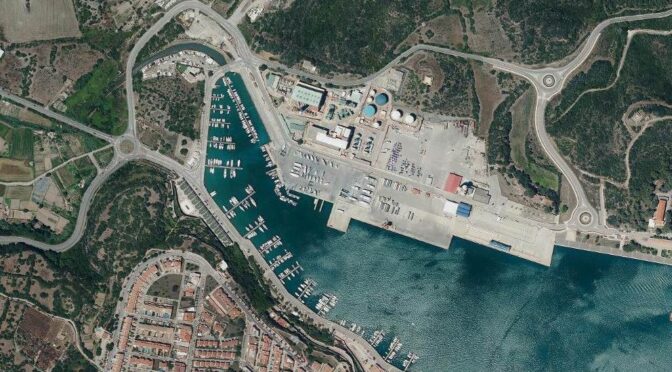Views: 228
The discharge of brine from the desalination plant, the extraction of sludge with the presence of heavy metals and increased occupation of the water surface are some of the concerns for the reorganisation of the Colársega of Maó. GOB has lodged a formal complaint.
Brine in an area without renewal of water
The project proposed by the Port Authority for managing the nautical concession of the Colársega of Maó includes the provision of two desalination plants that are expected to generate 43 cubic metres of water every day. It is common for membrane operated desalination plants to generate 55 litres of brine for every 100 litres of seawater processed. It is estimated, therefore, that 52.5 cubic metres of water would be generated every day containing brine. The Mediterranean usually has approximately 37.5 grams of salt per litre, while the discharge from a desalination plant reaches concentrations above 70 grams.
When this water is discharged into the sea, because of its greater density, it tends to fall to the bottom and affects the communities that live there. The area of the Colarséga is in the most secluded part of the Maó Port, so it has the lowest level of renewal, which is only when rainwater comes from the stream.
GOB has requested a study of the natural values of the area and environmental monitoring for analysing the evolution of marine life at the site of the Colársega.
No preventive or corrective measures of this sort are shown in the project. Action has been requested to reduce the concentration of salt by dilution with seawater before the discharge.
Sludge that must be confined
The project foresees some 2,500 cubic meters of dredging to include the area of concession as well as in the immediate area of the stream. All this space was affected some decades ago by direct discharge of industrial waters, mostly from jewellery factories. In addition, the area is located directly in front of the power station that supplies Menorca.
The application of the guidelines for the characterisation of dredged material concludes that a part of them is characterised at level B and C, for the presence of copper, mercury, lead and butyltins.
In this respect, the current regulations stipulate that the materials of category C can be relocated by a technique of confining them to an area either above or below water in the port, or below water level in non-restricted areas.
As GOB records, the port of Maó is a natural port with important biological functions of the marine life of Menorca and is, also, where seafood is produced for human consumption.
For these reasons, clarification has been requested regarding where the dredged materials will go and what methods of control will be taken during the extraction and at the destination, given that these materials are difficult to control.
More occupation of the water surface area and environmental evaluation
The proposed project is to use a very considerable area of water, to include a new boat jetty, as well as the installations and auxiliary services required for new platforms.
Specifically, it is planned to add a jetty on the south side (jetty named pantalán 8), as well as floating platforms for administration, quayside staff (marine office), night time surveillance, changing rooms, showers and toilets, warehouse facilities, desalination plants, emergency equipment, waste management, etc.
It is estimated that these new additions within the concession area will take up an added 2000 square meters of the water surface.
The Balearic Law on environmental assessment states that commercial and recreational ports must undergo environmental assessment when they increase the water surface occupation. It also stipulates that they must pass a simplified environmental evaluation for whatever project or activity that can affect the marine ecosystems.
Given that the Port of Maó is a natural one, that it is an important breeding ground for young fish and has been a large seafood production area; that still houses a considerable list of protected species, it is requested that the project is evaluated for its potential environmental repercussions.


One thought on “Desalination plants, sludge and other concerns in the Colársega of Maó”
Comments are closed.